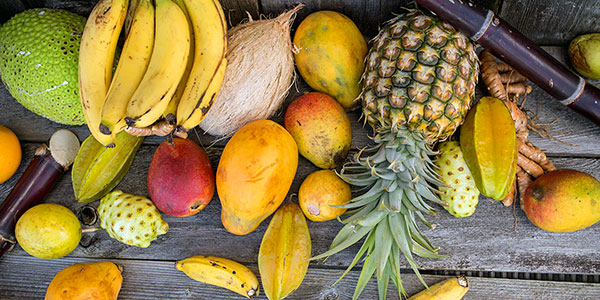
Hawaii continues to be ranked as the happiest state in the nation year after year. Something tells us the spirit of aloha, being near the ocean, and lots of sunny days contribute to this contentment. And people aren't the only ones who are happy in Hawaii. With a mild climate year round, local produce also thrives in the Aloha State. Though few fruit are actually endemic to Hawaii, exotic fruit now grows in abundance here.
Fresh fruit is like candy in the islands. If you are visiting Hawaii, it is really worth seeking out a farmer's market, fruit stand, or a grocery store to experience a delicious taste of fresh local fruit.
Certain produce will follow the usual seasonal harvest of what is at the peak in spring, summer, fall, and winter; However, Hawaii's growing season lasts all year long. Here are some of our favorite Hawaiian fruits and the best time to find them.

Passion fruit is known as lilikoi in Hawaii. This tart yet sweet fruit is nearly round, approximately 1 1/2 to 3 inches wide, with a tough outer skin. When ripe, the skin is colored yellow or purple, depending on the variety. Inside, the fruit is filled with juicy pulp and as many as 250 edible seeds
Lilikoi grows on a vine and is at its peak for harvest from June through January. Lilikoi is ready to eat when it is plump, has a slight give, and is fully colored. In its yellow form, the color is deeply golden and the purple fruits will be nearly black. What many people don’t realize is that the uglier and more wrinkled the fruit is on the outside, the sweeter it will be on the inside. The ripest fruits will simply drop off the vine.
The simplest way to eat lilikoi is to cut it in half and dig right in with a spoon. Remember, you can eat the seeds! But it is also delicious as a jam or jelly, incorporated into desserts, and added to drinks.

Mango is definitely a local favorite. Honolulu has several mango related events in the summer, such as the annual Moana Festival in July at the Moana Surfrider Hotel. There is also an Annual Mango Festival in August on the Big Island (Hawaii) to celebrate the beloved fruit.
There are over 60 types of mangoes in Hawaii, but the most popular varieties are Hayden, Raposa, and Pirie. Hayden, the most common mango in Hawaii, turns more red and yellow with only hints of green when it's ready to eat. The Hawaiian Rapoza starts off green, then turns purple, and finally yellow. The Pirie mango, an older variety found in the islands, is more yellow and green than red.
Mango trees produce flowers from December through April. The trees will begin to bear fruit in May with peak season being July and some trees giving fruit as late as October.
Ripe, juicy mangoes are amazing when eaten fresh and cold (don't eat the skin). Try cutting a mango in half, carving around its large seed. Score the flesh, not the skin, in a crisscross design. Then push up on the skin so that the fruit sticks out and can be eaten with a utensil or just held with your hands and bit into. Mango is also frequently enjoyed pickled or dried and dehydrated.
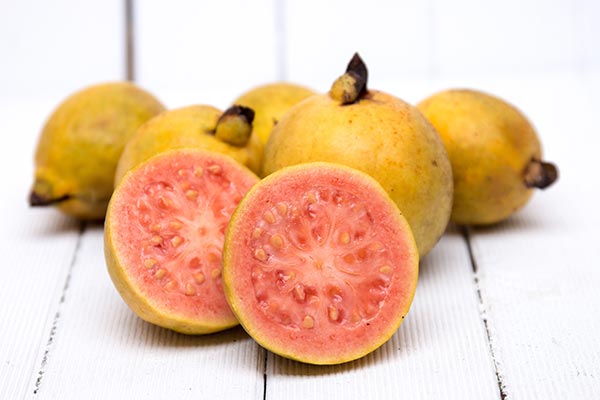
A couple of ripe guavas in a fruit bowl can scent an entire room. The common guava has yellow skin, pink flesh filled with seeds, and can grow to be about the size of a tennis ball. Every part of the guava is edible, even the skin and seeds. The fruit can be eaten fresh and is often made into juice, jam, jelly, or paste. Wood from the guava tree is great for smoking meat.
Guava can be found in two harvest periods, one from August to December and the second from January through April. A perfectly ripe common guava will be soft, yellow, and fragrant. It will give under your fingers if you squeeze it gently. The softer a guava is, the sweeter it will be. Don't squeeze too hard. Guavas bruise easily. Ripe guavas are those that have gone from bright green to a softer yellow color. You may even see a touch of pink on the fruit when it is in its prime. A guava's smell is described as sweet and penetrating, meaning you should be able to smell it without putting it right up to your nose. If it smells fermented, it is overripe. Guavas are very perishable. Once you have a ripe guava, you'll have about two days before they go bad, depending on how ripe the fruit is when you get ahold of it.
The strawberry guava is also common in Hawaii. It tastes like guava with a hint of strawberry. It has red skin and creamy white flesh with yellow seeds. The strawberry guava is much smaller than a common guava, about the size of a quarter.

Pineapple, although not inherently Hawaiian, is recognized today as a fruit of the islands. At one point, Hawaii supplied over 80% of the world's canned pineapple. Although production has declined to less than 10% of the pineapple sold worldwide, Maui Gold Pineapple Company still grows pineapple here on Maui and is known for being extra sweet and juicy.
Pineapple is grown year-round. There are a few ways to determine whether a pineapple is ripe - color, touch, smell, and the pluck test.
The exterior of a pineapple changes from a green-gray to yellow as it ripens, so you want a pineapple that is golden yellow. The color will rise from the base to the top. Some pineapples will be ripe even when they are still green towards the crown. A completely green or brown pineapple is not yet ripe. If a pineapple has reddish-brown or completely orange skin, wrinkled skin, cracks, mold, or withering brown leaves, it is overripe and may be starting to rot.
A pineapple should feel heavy for its size. It should be firm but yield if you push on it.
Check the smell at the base of the pineapple, where the aroma is strongest. If a pineapple has a sweet smell, it is ripe. An overripe pineapple will smell fermented like alcohol or vinegar.
If you have gone through all the other tests and are still unsure, try plucking an inner leaf from the crown of the pineapple. The leaf should come out without much resistance.
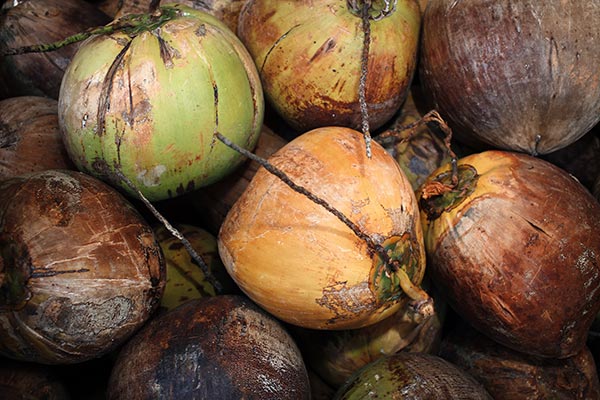
The coconut palm produces fruit all year long. Since the coconut has various uses, including coconut water, coconut milk, and coconut oil, it is harvested at different stages of maturity.
To get coconut water, the coconut must be harvested while it is still young and green on the tree. Young coconut is more tender and full of water.
As the coconut matures, the green coconut turns brown. Inside, the water lessens, and the coconut pulp changes from a softer, gelatinous consistency to solid white coconut meat.
When the softer coconut meat is grated and then squeezed, the resulting liquid is coconut milk. Once the outside is brown and the meat becomes hard, coconut can be dried and shredded or made into flakes or chips. This is also the point where coconut meat would be converted into oil.
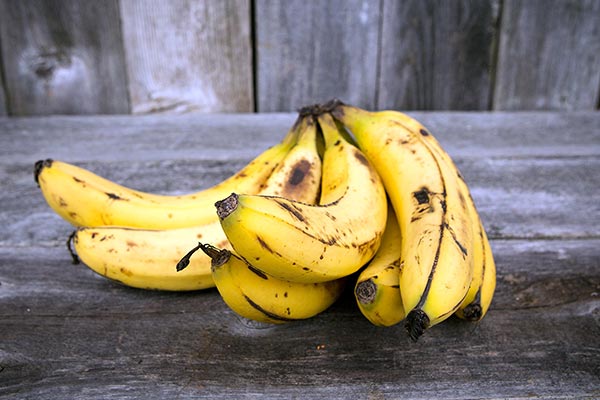
Did you know that there are about 1,000 different varieties of bananas? It's a shame then that most Americans are only familiar with the Cavendish banana (aka "Williams Banana") found in stores.
You can expand your banana palate in Hawaii, which is home to several banana varieties, from big to small, extremely pale yellow to reddish pink. The apple banana is one of the most popular varieties of bananas that you will find in Hawaii. It is shorter, sweeter, and higher in vitamins A and C than the Cavendish, with flavors of apples and strawberries. They can be harvested year-round but their peak season is June through October.
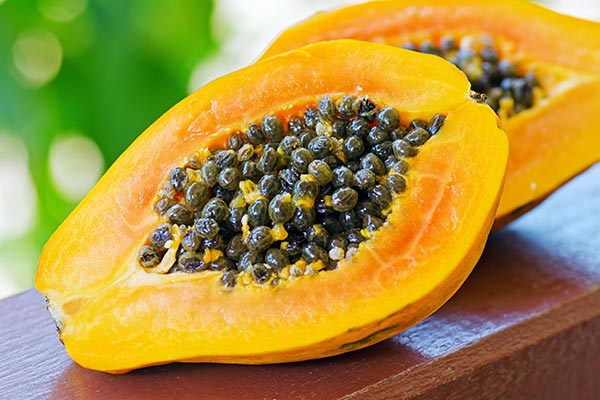
Papayas in Hawaii are so flavorful, they should be considered different fruits from the papayas found on the mainland. Available year-round in Hawaii, you know they're ripe when they turn from green to yellow. To eat, cut in half lengthwise, scoop out the seeds, and enjoy!
The round, black seeds are edible too. Those are ground up and added to salad dressings, where they impart a peppery flavor.
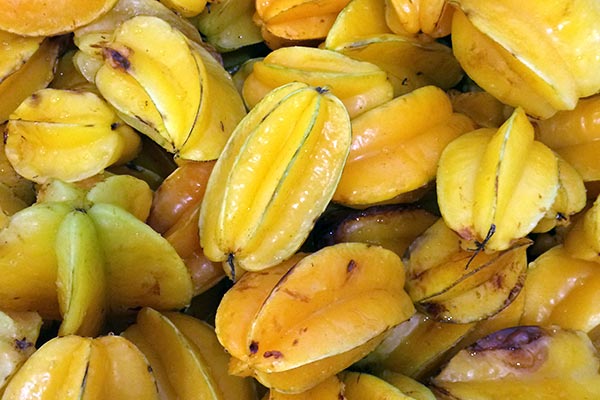
Starfruit received its name from the five ridges going down the sides, which create a star shape when sliced in cross sections. It is about 2-6 inches long with smooth, waxy skin that turns yellow when ripe.
Starfruit is available from September through April. The whole fruit is edible. It can be eaten fresh, juiced, or dehydrated. Starfruit makes a pretty addition to salads, and dehydrated starfruit can be made into a special treat by dipping in chocolate.
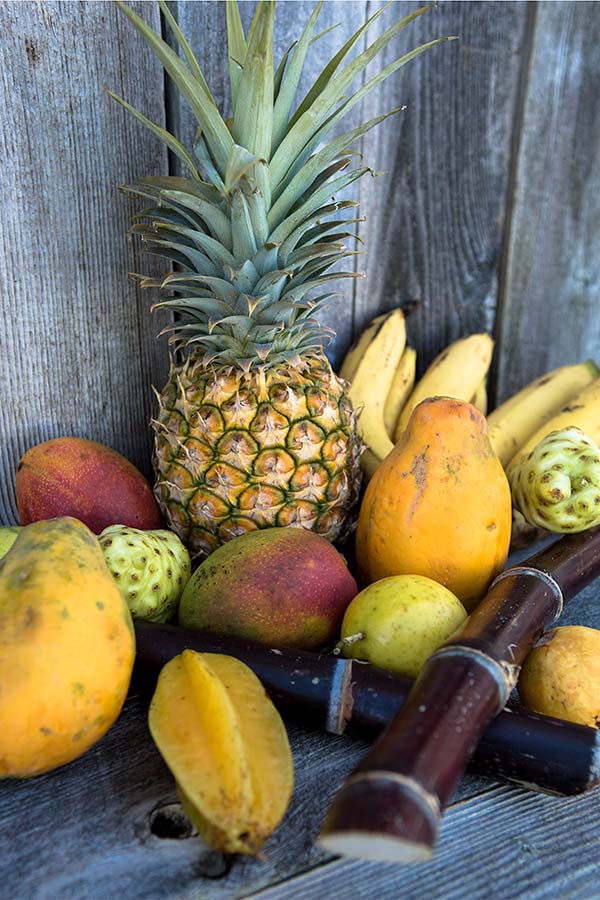
Comments will be approved before showing up.
Sylvia Kikuyama
Author